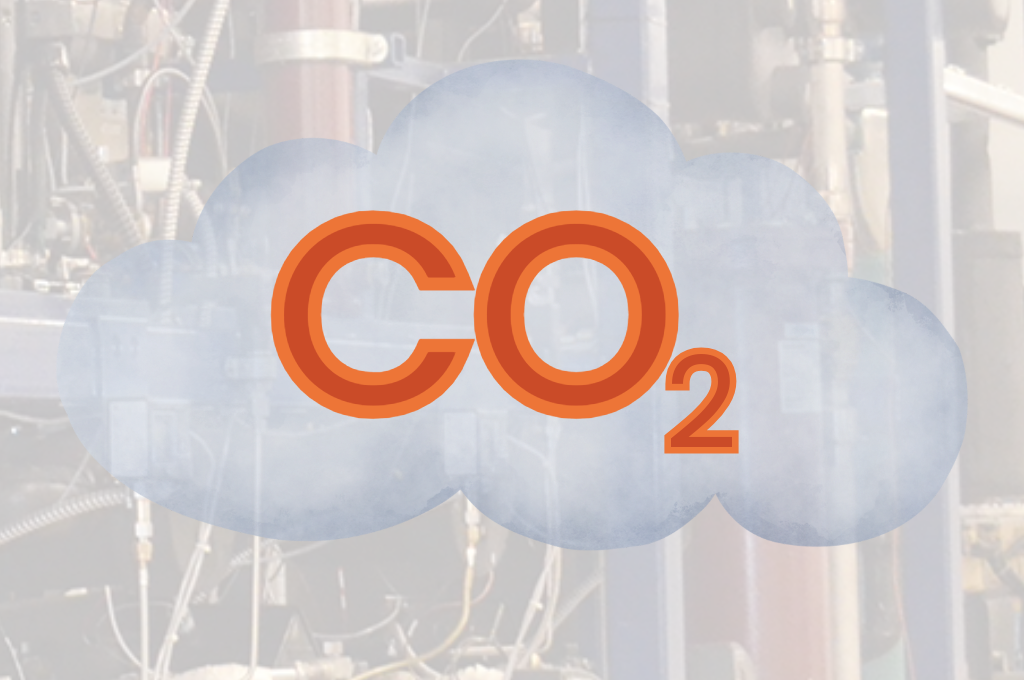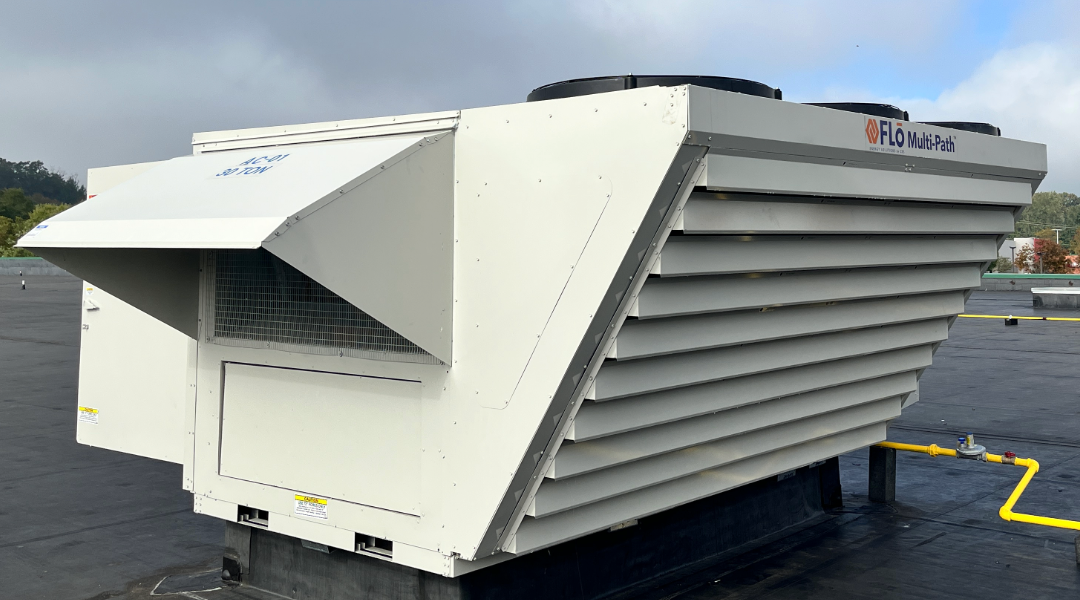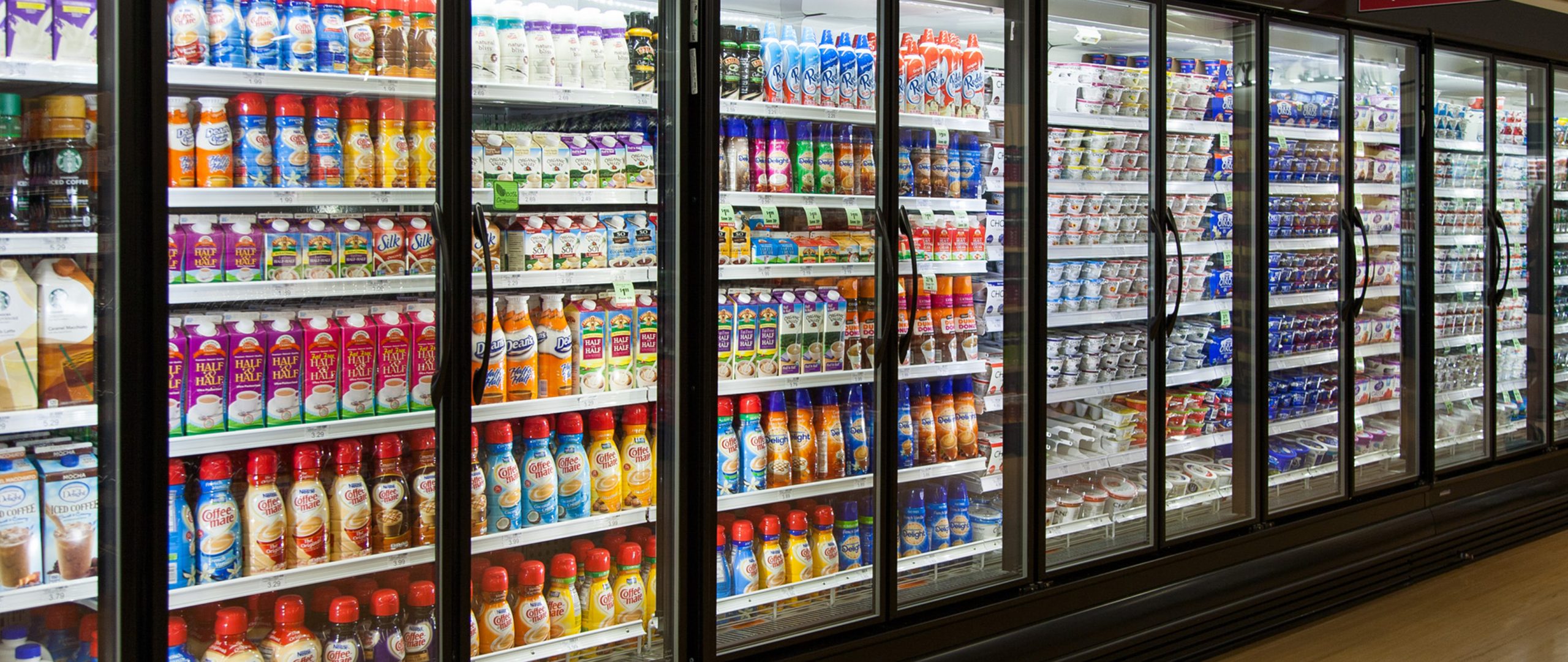Ever wonder how supermarkets manage to stay warm while keeping all that frozen food cold? It’s the result of hard science. One leading-edge innovation centers around heat recovery, and more recently, direct CO2 heat reclaim technology in supermarkets.
Flō Energy Solutions has taken CO2 heat reclaim in supermarkets to the next level. While heating and gas refrigeration may sound dull, when you realize how revolutionary this new tech has become, things get quite a bit more exciting. The game has changed entirely!
The basic concept of CO2 heat reclaim in supermarkets is simple but powerful. By capturing already-paid-for heat from CO2 refrigeration systems, supermarkets can reduce their heating bills and carbon footprint simultaneously, lowering what you spend on heat each winter, all while supporting your sustainability and electrification goals. And it’s only getting better!
Table Of Contents:
- CO2 Heat Reclaim Technology in Supermarkets
- “Boosted” Direct Reclaim Technology
- One Food Retailer’s Electrification and Decarbonization Plan
- Efficiency and Reliability of CO2 Reclaim Systems
- Installation Best Practices for CO2 Reclaim Systems
- Alternative Heating Solutions
- Conclusion

CO2 Heat Reclaim Technology in Supermarkets
Along with the transition from higher GWP (global warming potential) refrigerants to low GWP natural refrigerants, a heating solution that’s been gaining traction recently is CO2 direct heat reclaim technology . This clever method now uses valuable waste heat generated by CO2 refrigeration systems to warm store interiors in an environmentally-conscious way.
When supermarkets recycle already-paid-for heat instead of letting it vanish into thin air, they not only consume less energy, but also contribute to a greener planet. Both the planet and profit margins come out ahead in this beneficial situation.
Granted, this is not a brand-new technology. Flō Energy Solutions has been harnessing the power of this technology for 15 years, with almost 1000 successful installations and is leading the charge, embracing the move to natural refrigerants, to leverage all the benefits this policy trend provides. But there’s more to the heat reclaim story.
“Boosted” Direct Reclaim Technology
Here’s where we need to draw a distinction between “passive” heat reclaim, and “active” (or boosted) heat reclaim.
Traditional (passive) CO2 heat recovery is routinely utilized by Flō today, but this generally will not suffice to meet electification initiatives . For that, we need to look to another solution.
Flō Energy Solutions has developed an integration technology loosely termed “Boosted Reclaim” that takes direct heat recovery to the next level.
Barb Zyskowski , VP of Sales for Flō Energy Solutions explains,
“Essentially, we leverage the underutilized compressor capacity in the CO2 refrigeration system to move heat from the refrigeration rack to the HVAC heat reclaim coil in colder months, similar to a heat pump, but much more efficiently”.
Thanks to this technology, stores can harness heat from their CO2 refrigeration systems to warm their spaces naturally—no extra heating required and no costly upgrades to electrical service.
According to Flō , their boosted reclaim technology can achieve an average heating COP (coefficient of performance) of 6 or more, which is at least twice as efficient as a standard air-source heat pump, thus leading to considerable reductions in energy consumption, emitted carbons and ultimately, the heating bill. Using a CO2 refrigeration system, there’s no problem providing cost savings while decarbonizing. Flō proudly calls this “value innovation”.
Peter Reist , Director of Product and Sales Strategy for Flō Energy Solutions shared this important note of clarification:
“Many in the industry think of heat reclaim as a setup where the rack has a CO2 refrigerant to water heat exchanger, piping hot water or glycol to the HVAC unit for air heating. This is considered “indirect” heat reclaim. “Boosted” heat reclaim requires the CO2 refrigerant be used ‘directly’, with no heat exchanger losses. This is a very important distinction that allows for the significant benefits we’ve described.”
One Food Retailer’s Electrification and Decarbonization Plan
One Flō customer (one of the world’s largest food retail brands) has embraced boosted CO2 direct heat reclaim technology as part of their broader electrification and decarbonization strategy, unfolding in two phases.
Ambitiously, this food retailer aimed to trim their environmental impact while pivoting to eco-friendly systems. They maximize heat recovery from their existing refrigeration systems using the heat reclaimed to fully heat their stores in many of their locations.
The initial phase introduced the use of air-source heat pumps at several locations, followed by phase two which involved maximizing heat recovery through boosted CO2 reclaim technology. By using this technology, they’re able to reclaim a greater amount of waste heat and use it to offset their heating needs. This has enabled them to electrify many of their stores without the need for costly electical service upgrades.
How? The boosted heat reclaim technology allows the food retailer to bridge the gap that exists in heating capacity, providing a stable and efficient source of heat at low temperatures, compared to ASHP’s.
Laura Semidey, Flō’s Engineering Manager explained,
“The high efficiency at low temperatures is due to the heat transfer mechanism of heat reclaim, allowing it to become even more effective when the entering air temps are lower. To say it simply, the colder the air is, the more heat will transfer out of the reclaim coil. The colder air draws more heat out of the reclaim coil as compared to warmer air under the same coil conditions.”
Pretty cool, right?
This leading-edge system design outperformed commercial ASHP’s, especially where outdoor temperatures were lowest. Comparatively, the boosted direct CO2 reclaim systems perform more consistently than ASHP solutions.
We’ll be sharing more from this case study in later blog posts. #Science

Efficiency and Reliability of CO2 Reclaim Systems
Two key advantages to CO2 reclaim systems is their consistency and reliability.
Unlike commercial air-source heat pumps (ASHPs), which are inefficient or can shut down in colder temperatures, CO2 reclaim maintains its efficiency even when the mercury drops. This is because the refrigeration compressors are being utilized for pumping the heat, and cold conditions are not a problem for refrigeration compressors.
This represents a major shift in how food retailers think about their HVACR strategies; using boosted CO2 direct reclaim keeps you warm without relying on fossil fuels.Food retailers benefit from reduced utility costs by adopting this high-COP, energy-saving technology.
Installation Best Practices for CO2 Reclaim Systems
To get the most out of a CO2 reclaim system, proper installation is key. For instance, insulating your refrigerant field piping is a must to keep in as much heat as possible while ensuring the heating system is just right for your store’s requirements. Another critical consideration is having an expert (like Flō) design the optimized CO2 coil.
With the right setup, food retailers have a chance to rely less on additional heaters like electric resistance coils. Let’s not forget that when other systems fail, it’s the old-fashioned electric coil that often provides vital backup heat. It can compensate for any deficiencies in the available reclaim capacity, ensuring that the store maintains a comfortable temperature even in extreme conditions.
Food retailers looking to decarbonize and move toward electrification should take a close look at “Boosted” CO2 direct heat reclaim technology. It takes heat recovery to another level by leveraging the higher pressures inherent in CO 2refrigeration systems and helps achieve electrification without the costly electrical service upgrades. This smart strategy is an ideal, energy efficient solution for food retailers.
Alternative Heating Solutions
While boosted CO2 heat reclaim in supermarkets is a highly effective solution, it’s not always feasible in every location. There are times when standard heating solutions just don’t cut it and finding other ways to heat the sales floor becomes necessary. It’s essential to pick solutions tailored to a store’s particular characteristics—think about its square footage, where it’s situated and what kind of energy demands it has.
Consider going green with sustainable options—high-efficiency heat pumps save energy, or geothermal systems may make sense in some locations, although not an ideal solution. Community-powered initiatives like heated neighborhoods maximize resources effectively. When supermarkets focus on efficient energy management, they achieve more than just reduced expenses; they actively participate in safeguarding the environment.
Conclusion
We’ve unpacked what makes CO2 heat reclaim technology in supermarkets such a game-changer. The next iteration is Flō’s Boosted Heat Reclaim Technology, which takes the benefits of traditional CO2 heat reclaim and the move to natural refrigerants, like R744, to the next level.
Boosted CO2 direct heat reclaim technology can be one of the greatest tools in your arsenal to tackle your electrification, decarbonization. and sustainability initiatives. From lower energy bills to reduced emissions, there’s no downside!
If you’re as excited as we are about where this tech can take us next, then stay tuned! We’re not stopping here; more innovation on the way!
If you’d like to have a conversation with an HVAC expert dedicated exclusively to food retail, give Flō a call at 866-706-2647. Or drop us a line at info@systemsflo.com .

Authors’ Credits: Thank you to Laura Semidey , Peter Reist and Barb Zyskowski for providing the content for this blog post. Laura is Flō’s Engineering Manager, Peter is Flō’s Director of Product & Sales Strategy, and Barb is Flō’s VP of Sales.
Flō Energy Solutions has worked exclusively in food retail for 25 years . If you’d like us to keep in touch from time to time, sharing new innovations in HVAC design, dehumidification, electrification, decarbonization and other sustainability strategies, drop us a note at marketing@systemsflo.com or click HERE to connect via our website.
P.S. We dislike spam as much as you do—we only want to provide you with content that helps you tackle your electrification and decarbonization while tackling the issues unique to food retail. While we’d hate to see you go, you can opt out any time.